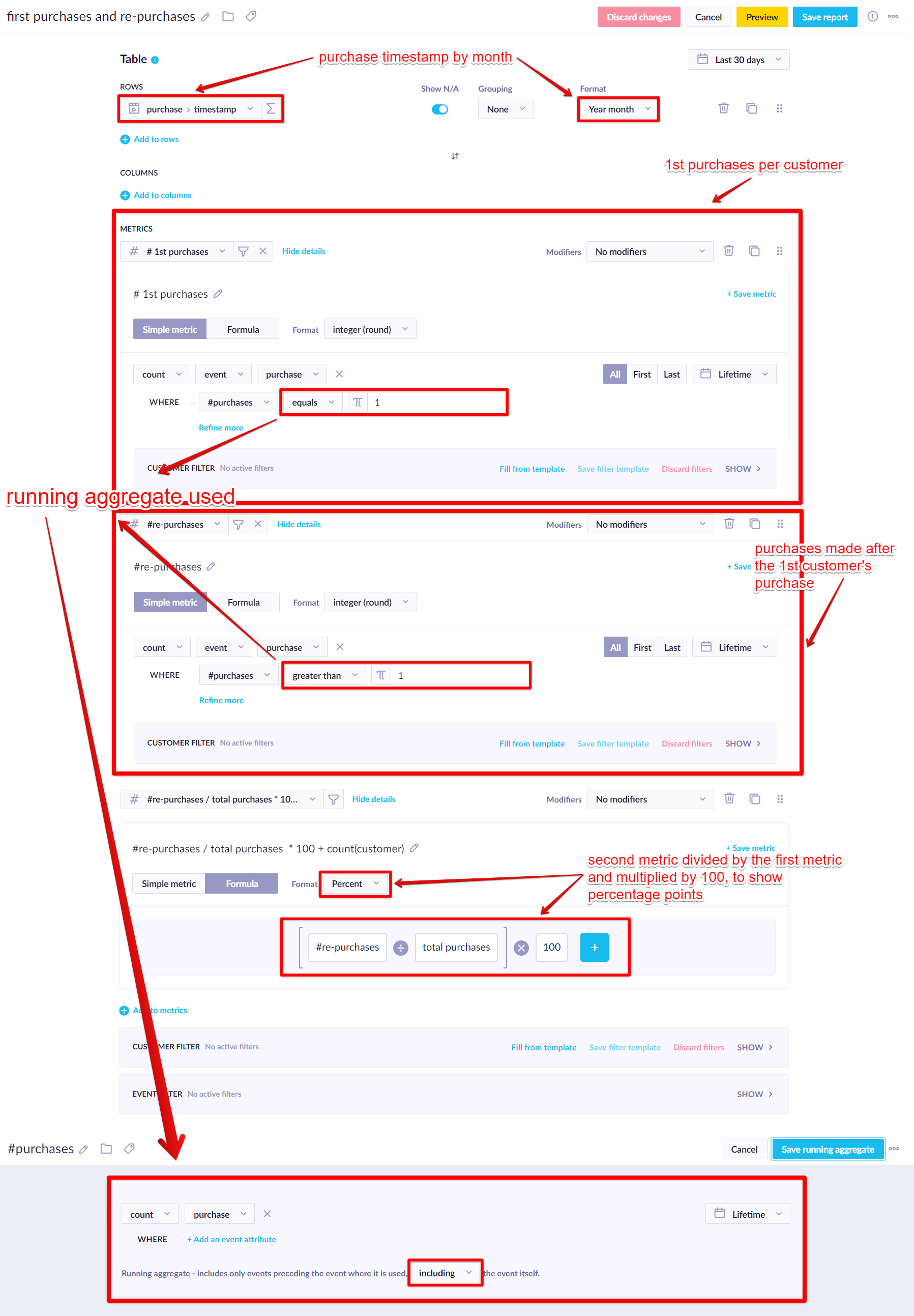Purchase and Repurchase Analysis
This guide will help you to understand
- What is a Purchase and Repurchase Analysis
- Why you should use Purchase and Repurchase Analysis
- How to create a Purchase and Repurchase Analysis
What is a Purchase and Repurchase Analysis
This analysis illustrates the ratio between first-time purchases and repurchases (i.e. purchases made by returning customers). The repurchase rate is a good indicator of customer loyalty which goes hand in hand with the overall perception of your business. The more satisfied your customers are, the higher the chance they will return again and bring you additional revenue. To build a solid base of loyal customers is not easy, but if you succeed, your business will have stable grounds to flourish.
Why you should use Purchase and Repurchase Analysis
The Purchase and Repurchase Analysis in conjunction with the cohort analysis provides you with a perfect overview of your customer retention. Although the repurchase rate is a good indicator of your customer loyalty, you should always take into consideration the character of your business. If you are selling hiking boots only, it is probable that you will have a low number of returning customers. In this case, your marketing efforts should be focused rather on the acquisition of new customers than retention.
How to create a Purchase and Repurchase Analysis
Required components
Open Analysis > Create a new Report using the following steps.

Insights from Purchase and Repurchase Analysis

Although there is no golden rule on what percentage is good enough, if you are getting at least 20% of your customers to return back, you are on the right track. There are, of course, customers who will never come back. However, if you have a tool with similar capabilities to Bloomreach Engagement, you can easily analyze their journey. This will give you valuable insights into what might have been the reason resulting in churn. For example, you may find that churned customers bought the same product (i.e. there may be something wrong with the product itself).
Be aware that at the beginning of the project, it is natural to see an increasing trend in the % of repurchases. This perceived increase may be caused by the fact that historical purchases have not been imported yet.
Updated 5 months ago
